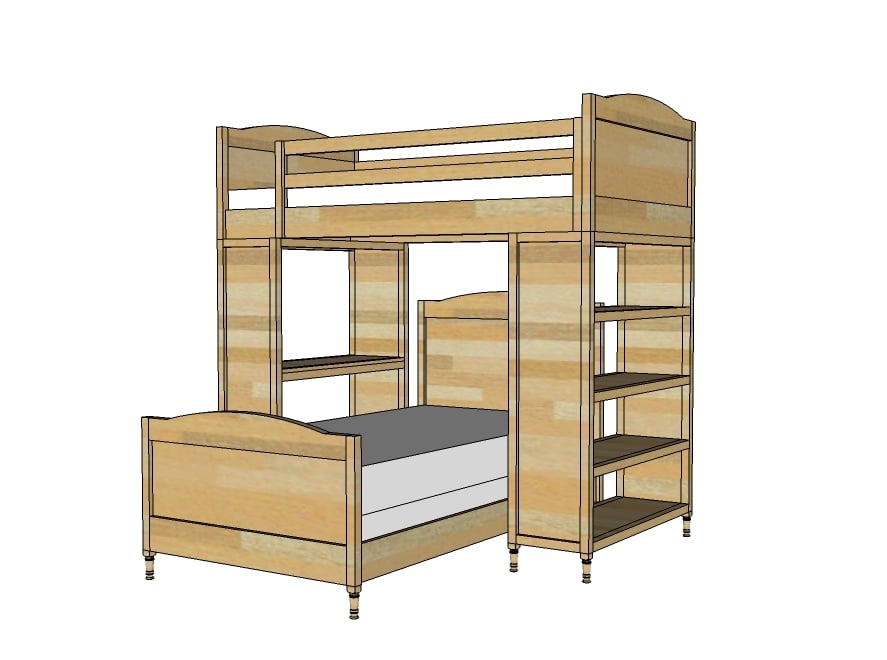
A girly bed that is part of a bunk system with desk space and storage. Super easy to build, features an arched top and decorative feet.

Preparation
4 - Hardwood feet, 1 1/2" diameter, 6" long
4 - 2x2 @ 8 feet long
1 sheet of 3/4" plywood, MDF or particle board
1 - 2x6 @ 8 feet long
3 - 1x6 @ 8 feet long
1x3s for the bed slats - approximately 7 - if you do not have a box spring or bunkie board
2 - 2x6 @ 39" (Headers)
1 - 3/4" plywood, MDF or particle board @ 39" x 17 1/2" (Footboard Panel)
1 - 3/4" plywood, MDF or particle board @ 39" x 34 1/2" (Headboard Panel)
2 - 1x6 @ 39" (Bottom Trim)
2 - 2x2 @ 21" (Footboard Legs)
2 - 2x2 @ 38" (Headboard Legs)
2 - 1x6 @ 75" (Siderails)
2 - 2x2 @ 75" (Cleats)
14 - 1x3 @ 39" (Optional Slats)
Please read through the entire plan and all comments before beginning this project. It is also advisable to review the Getting Started Section. Take all necessary precautions to build safely and smartly. Work on a clean level surface, free of imperfections or debris. Always use straight boards. Check for square after each step. Always predrill holes before attaching with screws. Use glue with finish nails for a stronger hold. Wipe excess glue off bare wood for stained projects, as dried glue will not take stain. Be safe, have fun, and ask for help if you need it. Good luck!
Instructions
Step 1
Step 2
Step 3
Step 7
It is always recommended to apply a test coat on a hidden area or scrap piece to ensure color evenness and adhesion. Use primer or wood conditioner as needed.
















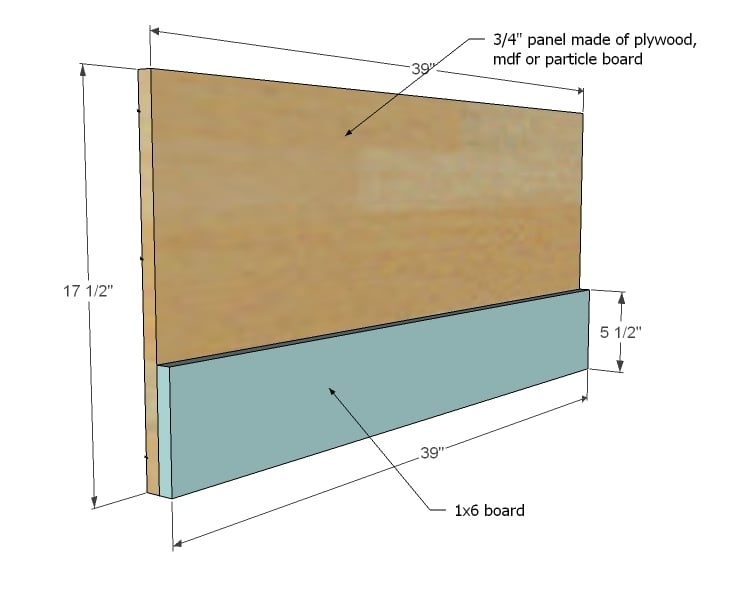


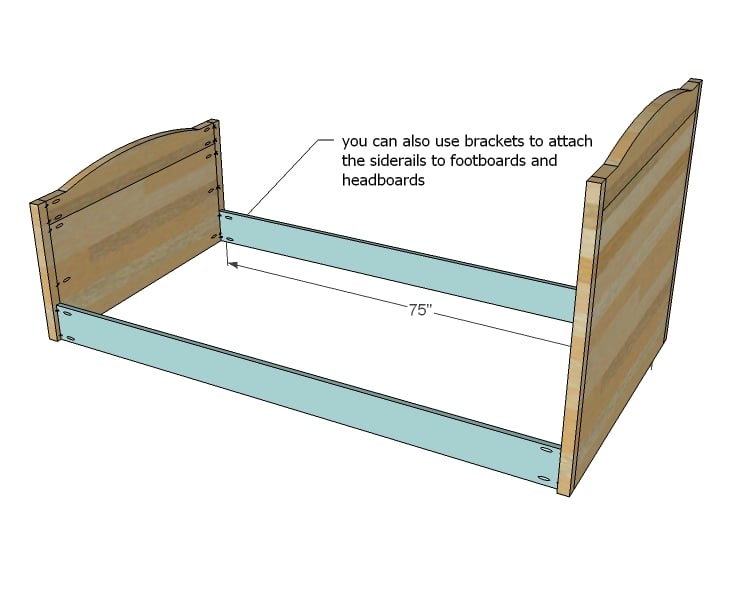
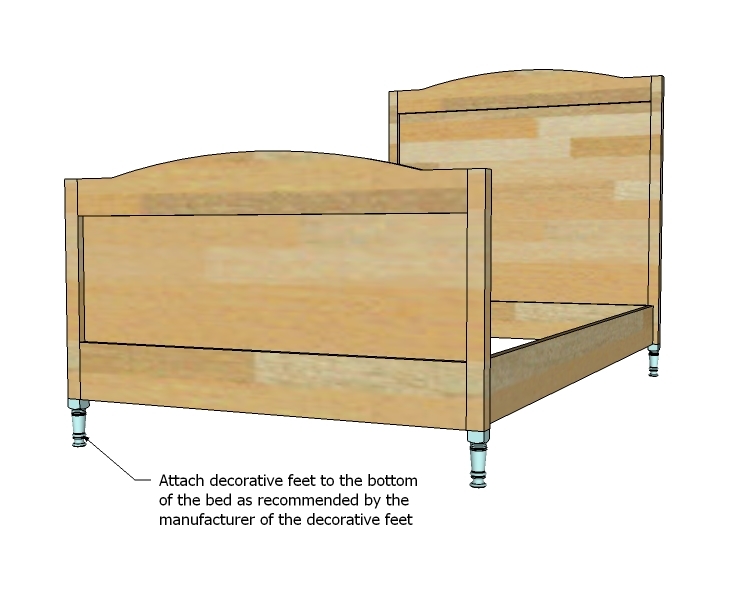
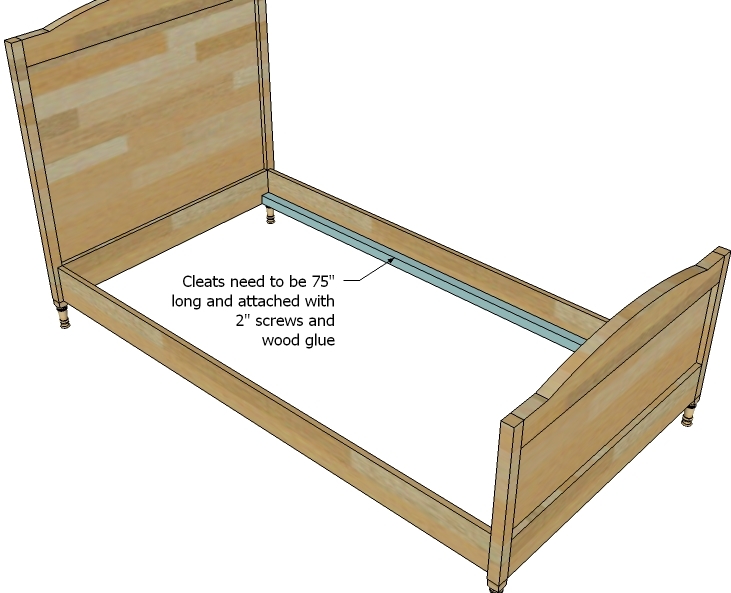

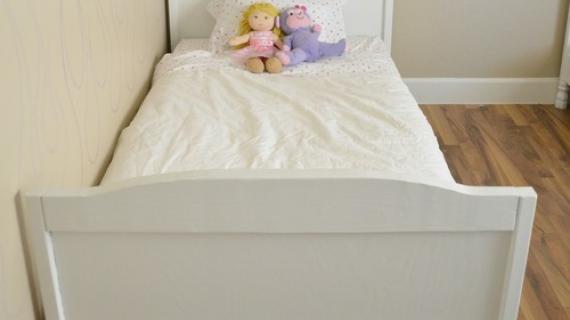
Comments
Guest (not verified)
Thu, 05/26/2011 - 11:35
top portion of bed?
Is there is a link for the plans to the top of the bed?
zackburnet
Thu, 02/27/2014 - 08:10
Outstanding woodwork guide
hey Ana , I used to try to make this bed with my own plan but failed ,
seems like your plans are easy to follow and understand , thanks for sharing